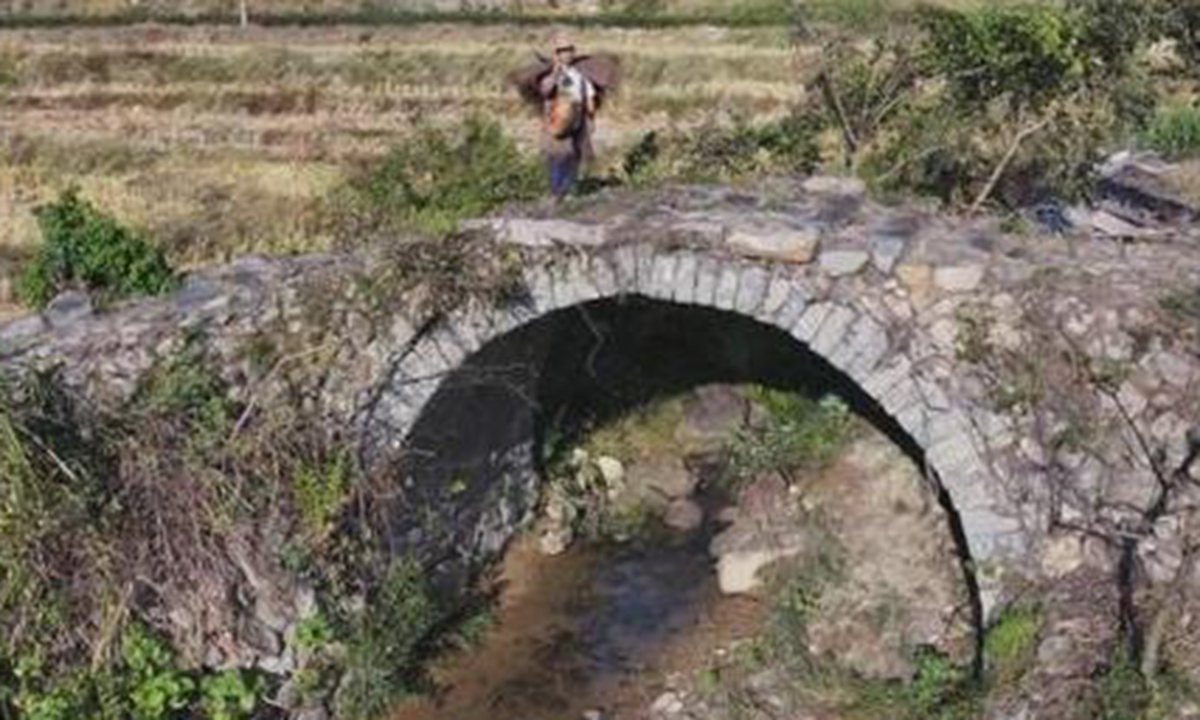ARTS / CULTURE & LEISURE
389-year-old Ming Dynasty bridge discovered in Fujian Province

A well-preserved ancient stone arch bridge dating back to the Ming Dynasty (1368-1644) has been uncovered in Songxi county, East China's Fujian Province. Photo: China News Service
A well-preserved ancient stone arch bridge dating back to the Ming Dynasty (1368-1644) has been uncovered in Songxi county, East China's Fujian Province, amid China's ongoing fourth national cultural relics census, the China News Service reported on Monday.
The discovery was made during an on-site inspection in Songxi, according to He Lixing, a dedicated heritage security patrol officer of the area. "The bridge had been abandoned for about 50 or 60 years, but its structure is unique," He said.
The bridge is a single-arch stone bridge, with the arch constructed from layered stone slabs. It measures 4.2 meters wide, 5.1 meters high and 7.4 meters long, with a 2.9-meter-wide deck paved with parallel stone steps. The bridge, which features a parabolic arch with both ends slanting south and north at an angle of over 30 degrees, presents an S-shaped design across the creek.
A stone tablet near the bridge details the names of the bridge's sponsors and builders, marking the bridge's construction as 389 years ago.
"This bridge was designed to follow the natural terrain. It is well-preserved, making it significant for studying ancient stone arch bridge construction techniques and historical transportation" said Xiong Yuliang, head of the Songxi County Heritage Protection Center. "It holds historical and cultural value, and we have registered it as a significant heritage site in our survey."
Villagers said that ancient trails, partially intact, connect to this bridge, leading toward two other ancient bridges in the area - One dating to the Yuan Dynasty (1279-1368) and the other to the Song Dynasty (960-1279), both of which remain in relatively good condition.
The fourth national cultural relics census kicked off in November 2023 and is expected to finish by June 2026, with a focus on immovable cultural relics, which include ancient sites, tombs, historical buildings, cave temples, stone carvings, and important modern historical sites and buildings, on the ground, underground and underwater, according to a notice by the National Cultural Heritage Administration published in January.
Global Times


